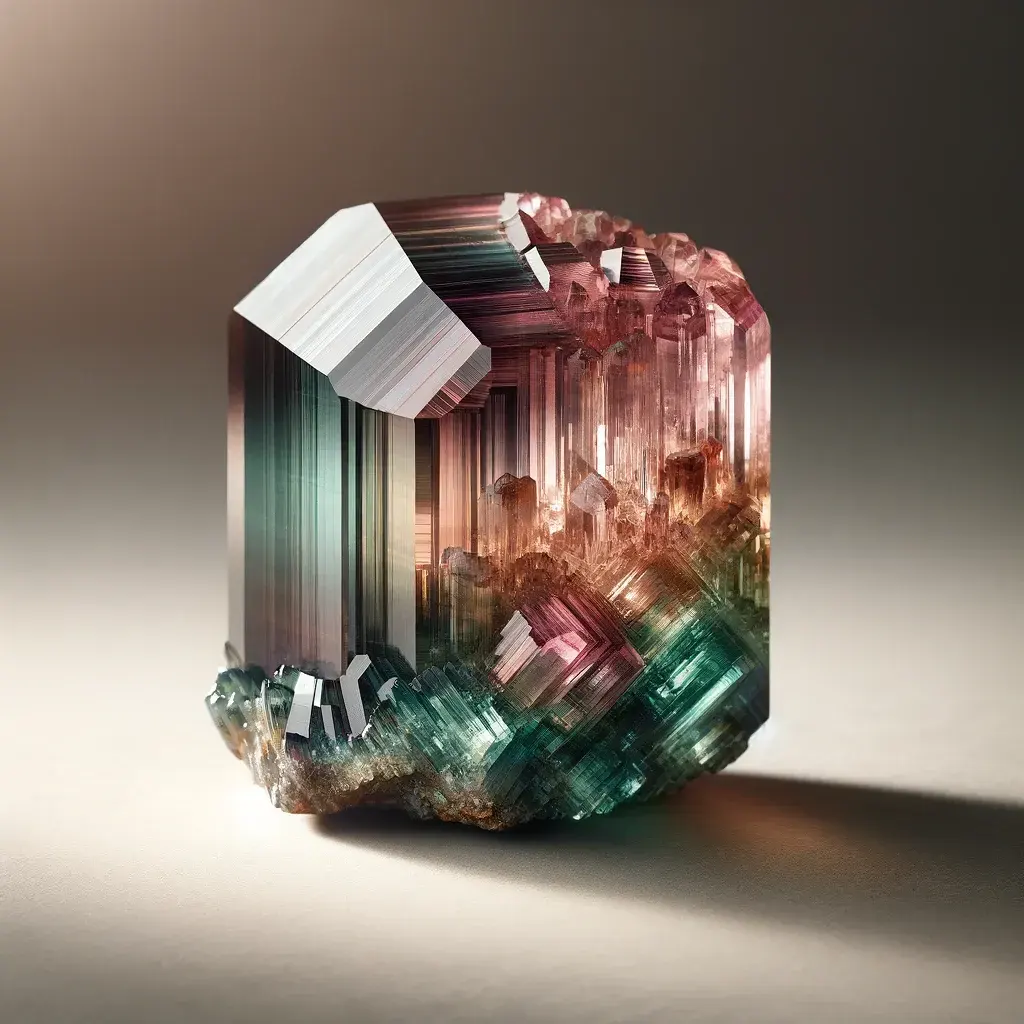
Introduction
Tourmaline, with its extraordinary range of colors, is a gemstone that truly captures the essence of variety and versatility in the natural world. Known as the “rainbow gemstone” for its immense color spectrum, tourmaline has captivated jewelers, collectors, and metaphysical practitioners alike. This article explores the captivating and colorful world of tourmaline, delving into its unique properties and symbolism.
Historical Significance of Tourmaline
Tourmaline has been cherished for centuries, valued for its beauty and its perceived healing properties. Its history is rich with lore and legend, with ancient civilizations believing in its protective and healing powers. The name ‘tourmaline’ comes from the Sinhalese word ‘turmali’, meaning mixed gems, due to its color diversity.
The Lore and Tradition of Tourmaline
Tourmaline has long been believed to offer protection against negative energies and to promote a sense of calm and balance. In various cultures, it was used as a talisman to guard against danger and to inspire artistic expression and creativity.
Physical and Healing Properties
Tourmaline is renowned for its wide array of healing properties. Each color variant of tourmaline is believed to have its unique healing attributes, ranging from promoting self-confidence to fostering compassion and tolerance.
Multi-Faceted Healing Powers
The diverse colors of tourmaline are thought to resonate with different chakras and energy centers within the body, providing a comprehensive healing and balancing effect. For instance, black tourmaline is renowned for its grounding and protective qualities, while pink tourmaline is associated with love and emotional healing.
Tourmaline in Traditional Healing
In traditional healing practices, tourmaline is used for its believed ability to strengthen the body and spirit. It’s also thought to encourage a positive outlook, enhance understanding, and increase concentration and inspiration.
Emotional and Spiritual Impact
Tourmaline’s influence extends to the emotional and spiritual realms. It’s believed to inspire creativity, foster compassion, and promote a sense of serenity and well-being.
Encouraging Creativity and Emotional Balance
Each color variant of tourmaline is thought to offer unique emotional benefits. For example, blue tourmaline is believed to aid in communication and expression, while green tourmaline is associated with healing and vitality.
Tourmaline in Modern Lifestyle
In contemporary life, tourmaline remains a popular choice for jewelry and decorative objects. Its vibrant colors and unique properties make it a favorite among those seeking both beauty and a connection with natural energies.
The Aesthetic Versatility of Tourmaline
Tourmaline’s wide color range and crystal structure make it a highly versatile gemstone for jewelry design. It can be found in elegant, sophisticated settings as well as in bold, contemporary pieces, appealing to a wide range of tastes and styles.
Tourmaline and Chakras
Tourmaline’s variety of colors allows it to interact with multiple chakras, providing a harmonizing effect across the body’s energy system. Each color variant is associated with specific chakras, offering targeted healing and balancing properties.
Aligning and Balancing Chakras
The multicolored nature of tourmaline makes it an excellent stone for chakra alignment and balance. It’s used to cleanse, activate, and stimulate multiple chakras, fostering an overall sense of physical, emotional, and spiritual well-being.
The Science and Skepticism
While the metaphysical properties of tourmaline are embraced in various spiritual practices, they are often viewed with skepticism by the scientific community. However, tourmaline’s unique physical properties, such as its pyroelectric and piezoelectric qualities, continue to make it a subject of scientific fascination.
The Geological Fascination with Tourmaline
Tourmaline, a complex borosilicate mineral, is studied for its crystallography, wide range of colors, and unique formation processes. It’s a mineral of great interest for its geological significance and the insights it offers into Earth’s processes.
Conclusion
Tourmaline, with its kaleidoscope of colors and diverse energies, remains a gemstone of wonder and allure. Whether cherished for its beauty, its array of healing properties, or its fascinating mineralogy, tourmaline continues to captivate and inspire, reflecting the myriad hues and depths of the natural world.
FAQ Section
What are the healing properties of Tourmaline?
Tourmaline is believed to offer a range of healing properties, from promoting mental and emotional balance to offering physical protection, depending on its color.
How is Tourmaline used in modern fashion?
Tourmaline is widely used in modern fashion, particularly in jewelry, for its vibrant colors and unique properties, adding a touch of elegance and color to any attire.
Do Tourmalines have metaphysical properties?
While scientifically unproven, Tourmaline is often associated with metaphysical properties like protection, energy balancing, and emotional healing, varying with its color spectrum.
page on: